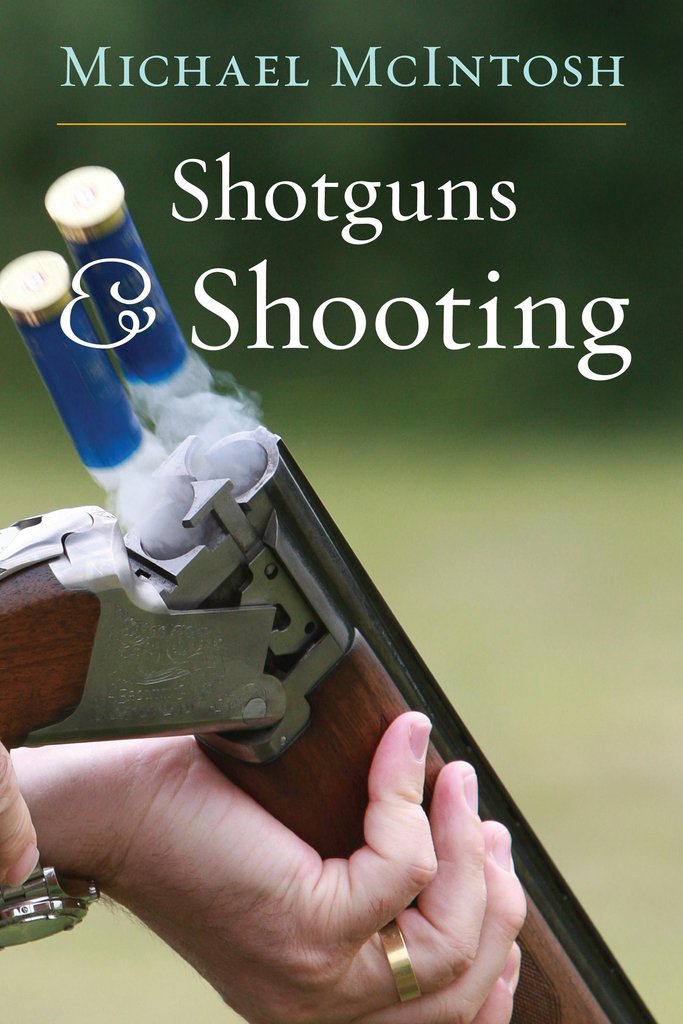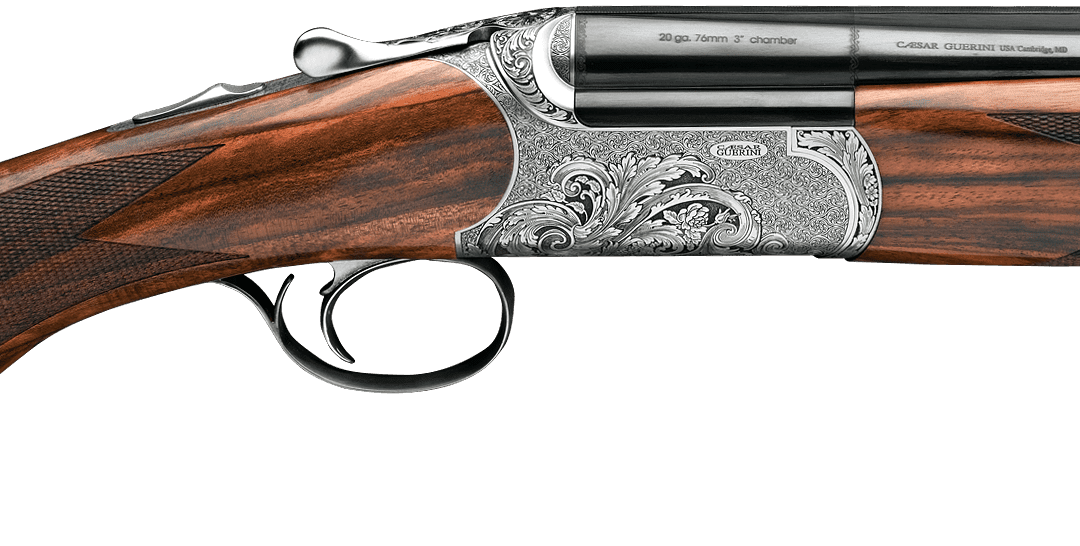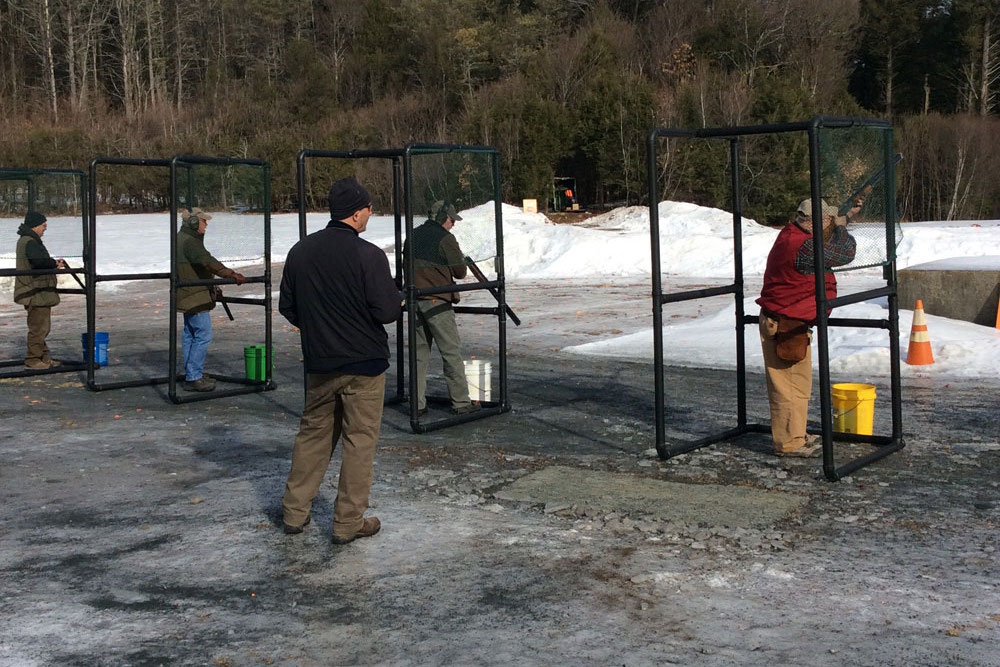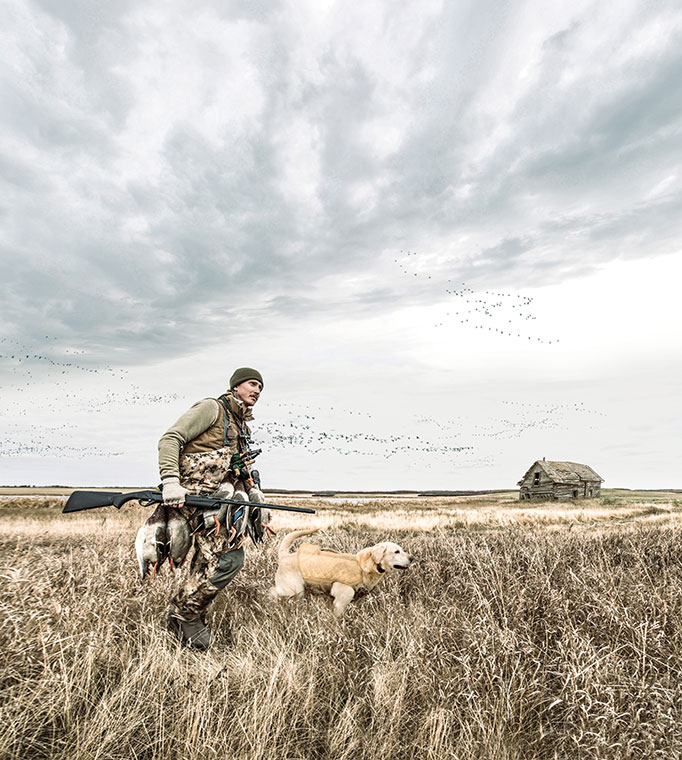Do you remember? The girl? Yes, that girl! The one who caught your eye from across the room all those years ago. She had long, flowing locks that shimmered like a mirage and a smile that lit up the room, and she moved with the fluid grace of a dancer or a stalking lioness, and you couldn’t take your eyes off of her, and when you finally worked up the courage to ask her to dance, she was gone. And sometimes, upon a still, dark night, you still wonder where she is.
I had one of those experiences awhile back. I’m not as young as I used to be, so it involved a shotgun rather than a girl. She was a petite little 28-gauge Ellipse by Caesar Guerini, and I danced with her briefly and liked her a lot, but then she was gone. I even talked with Caesar Guerini’s President, Wes Lang, about getting one for my personal use, but for some unknown reason, I just didn’t pursue the matter. I rarely have the opportunity to shoot my own guns anyway, so the matter was soon forgotten.
Then, in one of those rare “do-overs” that occasionally occur, I had the chance to renew our acquaintance. I had just scheduled a bird-hunting hip to Kessler Canyon in Colorado. I had planned to take a couple of my own guns, but the folks at Caesar Guerini called to inquire whether I would like to shoot one of their shotguns. Of course I jumped at the chance and specified a 20-gauge Elipse Evo with 28 inch barrels. I guess I thought I’d see if lightning would strike twice, and I’m happy to report that it did!

Revenant
Actually, I had been really surprised that I was so fond of the first Ellipse that I tried. Everybody who reads this column knows that I’m a dedicated fancier of side-by-sides. As a result of 60 years of using side-bys, over-unders seldom seem quite natural to me. For some reason the Ellipse does. I’m sure that part of the reason is that the Ellipse was originally conceived as a round-action field gun. It is not a conventional O/U that was modified. And it just feels great in the hand. It carries well, points well and, for me, at least, hits well. My shooting ain’t what it used to be, but for the duration of this trip, bangs were rewarded by thumps with gratifying regularity!
It doesn’t hurt anything that the Ellipse looks like a million bucks, too. Its lines are sleek and classic, and it’s decorated with the best-looking engraving in its price class. Guerini obviously took great care in designing the three-step engraving pattern.
As with every Caesar Guerini that I’ve tried, the overall quality was excellent. You wouldn’t expect less from a gun that has a lifetime warranty.
The field gun can be had in three models, including the Ellipse, Ellipse Curve, and Ellipse Evo, which is the one that I took along on this trip. Clay target versions are available as well. The final verdict is that I love this gun! I guess I need to call Wes.

Ellipse Curve
My recent western trip wasn’t only about shooting the Guerini at Kessler Canyon, though. I made a couple of other stops along the way, and in the process had the opportunity to check out the stock modifications that I had made to my recently acquired LeFevre 12 bore. I picked up the lovely old gun while back in a fit of nostalgia. It nearly duplicates the gun that started my fascination with side-by-side doubles many years ago.
The LeFevre is in exceptional condition for its age, and in addition to being aesthetically pleasing, it met my technical specifications perfectly. There was, however, a big problem. The gun didn’t fit me at all. For starters, at 15 1/2 inches, the stock was at least an inch too long for my average-sized frame. The stock’s drop-at-comb was about right, at an inch and a half; but the two-inch drop-at-heel wasn’t enough and left my master eye looking down on the rib, which made the shot charge impact too high.
Another concern: the stock was cast-on for a left-handed shooter. Since I’m right-handed, that meant that when I shouldered the gun, my master eye was to the left of the center-line of the rib. That forced me to look across the rib from left to right, causing the shot charge to go left.
Adding insult to injury, there was absolutely no pitch to the butt of the stock, which exacerbated the clumsiness of the too-long pull and caused the toe of the stock to dig into my shoulder every time I fired it. As a result of this total misfit, I couldn’t hit a damn thing with it!
Donnie Gettys, my local gunsmith, knows a thing or three about gunstocks, so the first fix was easy. I had Donnie shorten the stock to my normal 14 1/2 inches and cut just a tad of pitch into the butt. That done, the gun shouldered easily, but left me looking cockeyed over the rib from the high left.
I debated simply having the stock bent to correct the drop and cast problems, but since the 1 1/2 inches of drop at the point of the comb was about right for me and the butt was amply deep from top to bottom, I decided to work the comb down with sandpaper, leaving the point of the comb where it was and deepening the drop at the heel. That allowed me to gradually increase the drop while shooting the gun periodically to check placement of the pattern. All the while, I was getting more and more comfortable with it.
When I had worked the butt down to the point where drop-at-heel measured 2 1/4 inches, my paper patterns found the right elevation.

At that point, all was right except for cast. The stock was still bent to the left to accommodate a left-handed shooter. The only way to fix it would be to bend it, so I send the gun to my pal Ken Eversull in Louisiana. Ken made the change in short order and the gun came back cast-off 3/16 inch to the right as requested. Finally, everything looked and felt right.
The package from Ken caught up with me midway through my western birdhunting swing so I had the chance to try it in the field. I was not disappointed. The awkward, unwieldy LeFevre had been transformed into an extension of my arm that automatically pointed where I looked.
The first bird I encountered was a big, bright cock pheasant that erupted from the sage under my feet and rocketed straight upward. My right barrel took him cleanly, and I was rewarded with a solid thump when he came to earth. Next carne a covey of Hungarian partridge that blew out from the scrub beneath a tall pine. An easy straightaway and then a lone straggler that hooked hard from left to right came down to a snappy right and left barrel.
A little further on, while we were looking for singles from the covey, the dogs froze on the scent of another big rooster pheasant. The cockbird came out low and flushed one of the misplaced huns. A couple of quick shots and both fell dead for a rare mixed double. And so it went for the rest of the day. And the next!
The ugly duckling had been transformed into a swan, and I shot about as well as I am capable of shooting. The LeFevre was now truly mine! And that’s why stock fit is so important.
 “Truly fine guns are as much works of art as poems, novels, or paintings,” writes acclaimed outdoor writer Michael McIntosh in this classic book. And who better to guide us through the world of fine guns than McIntosh. Here, he captured the whole gun–the gun as a combination of form, fit, and function. Divided into two sections, the first on the art of guns and gunmaking, and the last on the art of shooting, this book is, as McIntosh himself says, “a celebration of the gun.” Indeed, it’s a celebration no lover of fine double guns should miss. Shop Now
“Truly fine guns are as much works of art as poems, novels, or paintings,” writes acclaimed outdoor writer Michael McIntosh in this classic book. And who better to guide us through the world of fine guns than McIntosh. Here, he captured the whole gun–the gun as a combination of form, fit, and function. Divided into two sections, the first on the art of guns and gunmaking, and the last on the art of shooting, this book is, as McIntosh himself says, “a celebration of the gun.” Indeed, it’s a celebration no lover of fine double guns should miss. Shop Now



